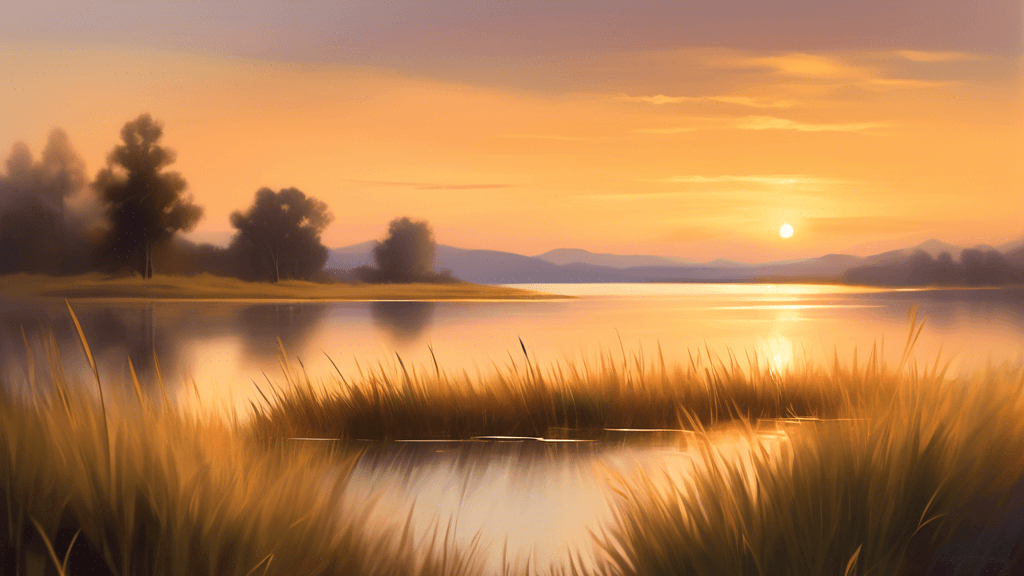
Mastering Foreground: Enhancing Composition with the Subtle Whisper of Grass
Share
Understanding the Role of Foreground in Photographic Composition
Have you ever looked at a photograph and been immediately drawn into the scene, as if you could step right into it? What is it about some images that captivate and hold our attention so thoroughly? Often, the secret lies in the composition, specifically in how the photographer uses the foreground to enhance depth and add interest. In this blog, we dive deep into the art of using foreground elements, such as grass, to transform good photos into great ones.
Why Does Foreground Matter?
Foreground elements in photography are essentially the components that populate the front part of the composition. Their role? To lead the viewer's eye into the scene, add depth and context, and contribute to the narrative being told. Without a thoughtful foreground, images often appear flat and unengaging. But when used effectively, the foreground can dramatically increase the photograph's impact.
Mastering the Whisper of Grass in Your Photos
Grass, though seemingly mundane, can be a powerful tool in foreground composition. It provides texture, lines, and color, subtle elements that can significantly enhance the aesthetic value of your images. Moving beyond the conventional, how can you use grass to whisper an inviting story into your compositions?
1. Creating Depth and Dimension
Consider this: when grass is included in the foreground of a landscape, it adds a layer of depth. That extra layer helps the eye travel from the front of the image, through the middle, and finally to the back, creating a three-dimensional journey for the viewer. Grass can act as a stepping stone that guides the viewers through the visual space of your photos.
2. Enhancing Texture and Detail
Texture plays a crucial role in the tactile quality of an image. It brings a photograph to life. Grass, in its natural variety — be it the smooth, flowing blades of tall wheat-like grass or the short, stubby turf of a manicured lawn — introduces an element of detail that the eye finds intriguing. How does light play off the tips in the morning dew? How does grass bend under the wind? These details can turn an average scene into a captivating one.
3. Adding Movement
Movement in a photograph can convey emotion and mood. Grass swaying in the breeze can inject a sense of calmness and tranquility into your picture, while a still, frost-covered grass can evoke a sense of serene cold. Capturing grass in various states can help communicate different feelings, making your photos more powerful and evocative.
4. Using Grass as a Narrative Element
Every element in your photo should contribute to the story you are telling. Grass can set the stage for changes in the seasons, indicate the location, or even suggest the time of day. It can also reflect themes of growth and renewal or decay and neglect, depending on its state and context within the image.
Key Techniques for Capturing Grass Effectively
To truly harness the power of grass in your compositions, consider the following techniques:
- Selective Focus: Use a shallow depth of field to isolate a small area of grass, making it the sharp subject against a softly blurred background.
- Low Angle: Get down low to make the grass loom larger in your frame, which can create a more immersive perspective.
- Backlighting: Position yourself so the light filters through the grass from behind, highlighting its edges and textures.
- Contrast and Color: Experiment with the color contrasts between the green of the grass and the other elements in the scene to make your foreground pop.
As renowned nature photographer Ansel Adams once said, A good photograph is knowing where to stand. When it comes to using grass as a foreground element, this couldn't be truer. Your position relative to your subject can transform the mundane into the sublime.
Conclusion
Employing grass as more than just an ordinary part of your landscape shots but as a deliberate, thoughtful foreground choice can elevate your photography dramatically. It’s about seeing the potential in the everyday and exploiting it to enhance your photographic narrative. So, next time you're out with your camera, consider the humble grass beneath your feet — it might just be the key to your next great photo.
Are you ready to transform your photographic approach with the subtle yet powerful use of grass? What scene will you capture first using these techniques?





